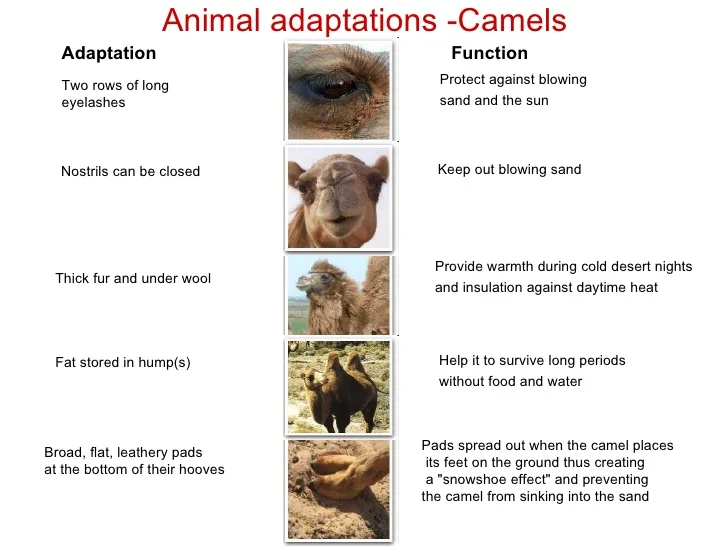Desert Adaptations Animals And Plants. Plant and animal bodies are made up of a number of complex biological processes which take place within a. Use this discussion as a jumping off point to introduce the term adaptation:

An adaptation is a characteristic of a living thing that helps it survive in its environment. O rganisms create adaptable situations around them on the basis of their needs, called as adaptation. Stems of most cacti and other succulents are thick and fleshy.
A Leathery Or Waxy Coating On The Leaves And Stems Reduces Evaporation.
Their padded feet keep them from sinking the sand, and their long legs keep their body away from the hot sand. The majority of annual desert plants germinate only after a period of heavy seasonal rain. To survive in the mojave desert, the plants and animals here have to adapt themselves to some harsh abiotic factors that exist here.
The Print Version Is Black And White So Kids Can Color It, And The Digital Version Is In Color And Includes Audio!
All living things have adaptations, even humans. Desert plants have special pathways to synthesize food, called cam (c 4 pathway). Desert plants, like desert animals, have adapted to extreme heat and aridity through physical and behavioral mechanisms.
Definitions Of Plant & Animal Adaptations.
To survive, desert plants have adapted to the extremes of heat and aridity by using both physical and behavioral mechanisms, much like desert animals. Plants have an extensive root system to tap underground water. N octurnal desert animals keep cool by being active at night, whereas some other desert animals get away from the sun’s heat by digging underground burrows.
The Deserts Are Very Hot During The Day But Will Cool During The Evening.
Sage bushes, creosote bushes, cacti, lupine, indian paintbrush, prickly poppies, chia, ghost flower, desert chickory, prickly pears, dragon trees, desert spoons. Deserts, where the environment is generally hot and extremely dry, provide many striking examples of how plants and animals are adapted to their surroundings. Uromastrix hardwickii is reported to possess hygroscopic skin that absorbs water like blotting paper.
Reptiles Such As Snakes Come In The Open Only At Dawn Or Dusk.
Are well adapted to their habitat. Some small desert animals live in burrows to escape the heat. The two main adaptations that desert animals must make are how to deal with lack of water and how to deal with extremes in temperature.